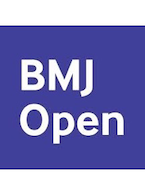More Aware, More Protected: Do Road Safety Skills Predict the use of Passive Safety Elements among Teenagers
- Autors: Sergio Useche, Francisco Alonso, Luis Montoro, Leandro Garrigós. (2019).
- Tipus de publicació: Article
- URL Publicacio: More Aware, More Protected: Do Road Safety Skills Predict the use of Passive Safety Elements among Teenagers
- Titol publicació (nom del llibre o de la revista): BMJ Open. Num.9:e035007
-
Resum:
Objective This study had two objectives: first, to test the effects of sociodemographic variables, and the effects of three key road safety skills (knowledge–risk perception–attitudes) on the use of passive safety elements (PSEs) among teenagers; and second, to assess the differential impact of the study variables on PSEs use from a gender-based perspective. Setting and participants This cross-sectional study was framed in the paradigm of primary care, and it involved students from several educational centres in Spain. A sample of 827 Spanish teenagers (52.4% females and 47.6% males) with a mean age of M=14.41–7 (12–19) years was used. Results Through SEM modelling, we found that the use of PSEs is largely explained by psychosocial variables through the mediation of three road safety skills: risk perception (β=0.103***), rule knowledge (β=0.095*) and attitudes towards road safety (β=0.186***). Furthermore, multigroup analyses showed that, although most variables explain the use of PSEs among teenagers in a similar way, key gender-based differences exist in this regard. Conclusions Road safety skills have a significant effect on the use of PSEs among Spanish teenagers, and gender explains some differences in the mechanisms which predict them. Also, in the study we discuss the need for strengthening school-based interventions aimed at helping this vulnerable group of road users acquire and develop positive behavioural competences.
DOI: 10.1136/bmjopen-2019-035007ISSN: 2044-6055










